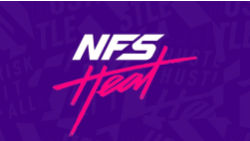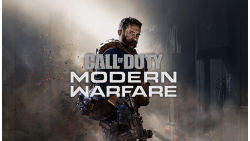AMD Radeon HD 7870 (GHz Edition) vs AMD Radeon 530
The Radeon HD 7870 (GHz Edition) has 166% better performance than the Radeon 530 for the 3DMark 11 Performance GPU benchmark.
The Radeon HD 7870 (GHz Edition) has 11% of the performance per dollar compared to the leader for the 3DMark 11 Performance GPU benchmark: AMD Radeon RX 9070 XT.
Summary
About the AMD Radeon HD 7870 (GHz Edition) GPU
The AMD Radeon HD 7870 (GHz Edition) is an end-of-life desktop graphics card that released in Q1 2012 with a MSRP of $349. It is built on the GCN 1.0 GPU microarchitecture (codename Pitcairn) and is manufactured on a 28 nm process.
Memory
The HD 7870 has 2 GB of GDDR5 memory, with a 1,200 MHz memory clock and a 256 bit interface. This gives it a memory bandwidth of 153.6 Gb/s, which affects how fast it can transfer data to and from memory. GPU memory stores temporary data that helps the GPU with complex math and graphics operations. More memory is generally better, as not having enough can cause performance bottlenecks.
Cores and Clock Speeds
The HD 7870 includes 1,280 stream processors (SPs), the processing units for handling parallel computing tasks. The GPU operates at a core clock speed of 1,000 MHz. Complementing the processing units are 80 texture mapping units (TMUs) for efficient texture filtering and 32 render output units (ROPs) for pixel processing.
Compatibility & Power Consumption
The HD 7870 occupies 2 PCIe expansion slots. It supports DVI, HDMI 1.4a, mini-DisplayPort 1.2 display connections. AMD recommends a power supply of at least 450 W to handle the GPU's thermal design power (TDP) of 175 W.
Benchmark Performance & Value
The HD 7870 has the 250th best 3DMark 11 Performance GPU score among the 567 benchmarked GPUs in our database. It achieves 4.77% of the performance of the best benchmarked GPU, the NVIDIA GeForce RTX 5090. Its 6,194 score and $349 launch price (MSRP) gives it a performance per dollar of 17.75. This is the 101st best in value for the 3DMark 11 Performance GPU benchmark.
About the AMD Radeon 530 GPU
The AMD Radeon 530 is an end-of-life mobile graphics card that released in Q2 2017. It is built on the GCN 3.0 GPU microarchitecture (codename Weston) and is manufactured on a 28 nm process.
Memory
The 530 has 2 GB of GDDR5 memory, with a 900 MHz memory clock and a 64 bit interface. This gives it a memory bandwidth of 28.8 Gb/s, which affects how fast it can transfer data to and from memory. GPU memory stores temporary data that helps the GPU with complex math and graphics operations. More memory is generally better, as not having enough can cause performance bottlenecks.
Cores and Clock Speeds
The 530 includes 384 stream processors (SPs), the processing units for handling parallel computing tasks. The GPU operates at a core clock speed of 730 MHz and can dynamically boost its clock speed up to 891 MHz. Complementing the processing units are 24 texture mapping units (TMUs) for efficient texture filtering and 8 render output units (ROPs) for pixel processing.
Compatibility & Power Consumption
The GPU has a thermal design power (TDP) of 50 W. A power supply not strong enough to handle this might result in system crashes and potentially damage your hardware.
Benchmark Performance
The 530 has the 365th best 3DMark 11 Performance GPU score among the 567 benchmarked GPUs in our database. It achieves 1.79% of the performance of the best benchmarked GPU, the NVIDIA GeForce RTX 5090.
General Info
General overview of the GPU, including details like its manufacturer, release date, launch price, and current production status.
| Info | Radeon HD 7870 (GHz Edition) | Radeon 530 |
|---|---|---|
| Manufacturer | AMD | AMD |
| Architecture | GCN 1.0 | GCN 3.0 |
| Market Segment | Desktop | Mobile |
| Release Date | Q1 2012 | Q2 2017 |
| Launch Price (MSRP) | $349 | -- |
| Production Status | End-of-life | End-of-life |
| Shop | Check Price | Check Price |
Gaming Performance
Select a game to compare FPS metrics







FPS Benchmarks
This table showcases the average frame rate (FPS) achieved both GPUs in at various resolutions. Frame rate is a crucial indicator of how smoothly the GPU can run the game. A higher FPS generally translates to a smoother gameplay experience.
- Frames Per Second
 Gears Tactics | Radeon HD 7870 (GHz Edition) | Radeon 530 |
|---|---|---|
| Low - 720p | -- | 46 FPS |
| Medium - 1080p | -- | 17 FPS |
| High - 1080p | -- | 11 FPS |
| Ultra - 1080p | -- | -- |
| QHD - 1440p | -- | -- |
| 4K UHD - 2160p | -- | -- |
Compare Frames Per Second (FPS)
The average frame rate (FPS) in can be compared to similar GPUs to assess relative performance. Generally, higher FPS results in a smoother gameplay experience.
| GPU | Frames Per Second | |
|---|---|---|
| GeForce MX150 | 17.8 | +65% |
| Radeon 540X | 16.9 | +56% |
| GeForce MX130 | 12 | +11% |
| GeForce 930MX | 11.6 | +7% |
| GeForce MX110 | 11.1 | +3% |
| Radeon 530 | 10.8 | |
Compare Cost Per Frame
The average cost per frame in can be compared to similar GPUs to assess relative value. Generally, a lower cost per frame implies better value for your money.
| GPU | Cost Per Frame | |
|---|---|---|
| Our database does not have enough data to compare the FPS per dollar with other GPUs. | ||
Benchmark Performance
The Radeon HD 7870 (GHz Edition) has 166% better performance than the Radeon 530 for the 3DMark 11 Performance GPU benchmark.
The Radeon HD 7870 (GHz Edition) is ranked 250th with a score of 6,194, and the Radeon 530 is ranked 365th with a score of 2,327.
The Radeon HD 7870 (GHz Edition) has 27% of the performance per dollar compared to the leader for the 3DMark 11 Performance GPU benchmark: NVIDIA GeForce RTX 5090.
Radeon HD 7870 (GHz Edition)'s 17.75 performance per dollar ranks it 101st among the other benchmarked GPUs in our database.
Relative Performance
The average score in the benchmark test can be compared to similar GPUs to assess relative performance. Generally, powerful GPUs tend to have higher scores.
| GPU | Benchmark Performance | |
|---|---|---|
| GeForce GTX 760 | 7,962 | +29% |
| Radeon HD 7970 | 7,770 | +25% |
| Radeon HD 7870 (GHz Edition) | 6,194 | |
| GeForce GTX 750 Ti | 5,378 | -13% |
| GeForce GTX 480 | 5,014 | -19% |
| Radeon HD 8850M | 2,349 | -62% |
| GeForce 840M | 2,340 | -62% |
| Radeon 530 | 2,327 | -62% |
| FirePro W4170M | 2,315 | -63% |
| GeForce GT 745M | 2,249 | -64% |
Relative Value For Money
The average performance per dollar in the benchmark test can be compared to similar GPUs to assess relative value. A higher score implies a better value for your money.
| GPU | Performance Per Dollar | |
|---|---|---|
| GeForce GTX 660 Ti | 28.14 | +59% |
| Radeon R9 Nano | 26.63 | +50% |
| GeForce GTX 780 Ti | 22.34 | +26% |
| GeForce GTX 680 | 20.47 | +15% |
| Radeon HD 7770 (GHz Edition) | 19.48 | +10% |
| Radeon HD 7870 (GHz Edition) | 17.75 | |
| Radeon HD 6870 | 17.65 | -1% |
| Radeon HD 7970 | 14.15 | -20% |
| GeForce GTX 590 | 13.11 | -26% |
| GeForce GTX 470 | 12.44 | -30% |
Benchmark Scores
This table showcases the average performance scores achieved by both GPUs across industry-standard benchmark tests. These scores provide a valuable insight into overall performance. Powerful GPUs tend to have higher scores.
- Popular
| Benchmark | Radeon HD 7870 (GHz Edition) | Radeon 530 |
|---|---|---|
| 3DMark Time Spy Graphics | -- | 443 |
| 3DMark Time Spy Score | -- | 497 |
| 3DMark Cloud Gate Graphics | -- | 9,210 |
| 3DMark Fire Strike Standard Graphics | -- | 1,542 |
| 3DMark 11 Performance Score | 6,190 (+146.81%) | 2,508 |
| Cinebench R15 OpenGL 64 Bit | 120.1 (+169.89%) | 44.5 |
| PassMark G3D Mark | 4,596 (+345.35%) | 1,032 |
| PassMark G2D Mark | 580 (+235.26%) | 173 |
| Unigine Heaven 3.0 DirectX 11 | -- | 17 |
| Unigine Heaven 3.0 OpenGL | -- | 14.1 |
Technical Specs
Graphics Processor
General information about the graphics processing unit like their architecture, manufacturing process size, and transistor count. Newer GPU architectures generally bring efficiency improvements and may introduce technologies that enhance graphical capabilities.
| Spec | Radeon HD 7870 (GHz Edition) | Radeon 530 |
|---|---|---|
| Codename | Pitcairn | Weston |
| Architecture | GCN 1.0 | GCN 3.0 |
| Process Size | 28 nm | 28 nm |
| Transistors | 2,800 million | 1,550 million |
Memory Details
Memory specifications like their capacity, bandwidth, and clock speeds. GPU memory stores graphics data like frames, textures, and shadows which helps display rendered images. These specs are crucial for graphics-intense applications like gaming and 3D modeling.
| Spec | Radeon HD 7870 (GHz Edition) | Radeon 530 |
|---|---|---|
| Memory Size | 2 GB | 2 GB |
| Memory Type | GDDR5 | GDDR5 |
| Memory Bandwidth | 153.6 Gb/s | 28.8 Gb/s |
| Memory Clock | 1,200 MHz | 900 MHz |
| Memory Interface | 256 bit | 64 bit |
| L1 Cache | 16 KB | 16 KB |
| L2 Cache | 512 KB | 128 KB |
Board Compatibility
Compatibility information like their slot size, bus interface, power consumption, and display support. These specs are useful for verifying compatibility with your motherboard, power supply, and monitor.
| Spec | Radeon HD 7870 (GHz Edition) | Radeon 530 |
|---|---|---|
| Slots | 2 slots | -- |
| Bus Interface | PCIe 3.0 x16 | PCIe 3.0 x8 |
| Thermal Design Power (TDP) | 175 W | 50 W |
| Suggested PSU | 450 W | -- |
| Power Connectors | 2x 6-pin | -- |
| Outputs | DVI, HDMI 1.4a, mini-DisplayPort 1.2 | Device Dependent |
Cores & Clock Speeds
Processing power information like its cores and clock speed. These specs impact how fast they can process graphics. Each type of core or component serves a specific computational purpose.
| Spec | Radeon HD 7870 (GHz Edition) | Radeon 530 |
|---|---|---|
| Stream Processors (SP) | 1,280 | 384 |
| Compute Units (CU) | 20 | 6 |
| Texture Mapping Units (TMU) | 80 | 24 |
| Render Output Units (ROP) | 32 | 8 |
| Core Clock Speed | 1,000 MHz | 730 MHz |
| Core Clock Speed (Boost) | -- | 891 MHz |
Theoretical Performance
Theoretical performance numbers derived from the raw specifications of the different components like core count and clock speeds. While these provide a glimpse into peak processing power, they do not represent real-world performance.
| Spec | Radeon HD 7870 (GHz Edition) | Radeon 530 |
|---|---|---|
| Pixel Fill Rate | 32 GPixel/s | 7.13 GPixel/s |
| Texture Fill Rate | 80 GTexel/s | 21.38 GTexel/s |
| FP32 Performance | 2.56 TFLOPS | 684.3 GFLOPS |
| FP64 Performance | 160 GFLOPS | 42.77 GFLOPS |
API Support
Graphics API versions supported by these graphics cards. APIs evolve over time, introducing new features and functionalities. Older GPUs may not support recent versions.
| Spec | Radeon HD 7870 (GHz Edition) | Radeon 530 |
|---|---|---|
| DirectX | 12 (11_1) | 12 (12_0) |
| OpenCL | 2.1 (1.2) | 2.1 |
| OpenGL | 4.6 | 4.6 |
| Shader Model | 6.5 (5.1) | 6.5 |
Check out these comparisons for similar GPUs:
Looking for alternatives? Check out these similar GPUs:
* Performance rating, performance per dollar, and rankings are based on the 3DMark 11 Performance GPU benchmark and MSRP.
